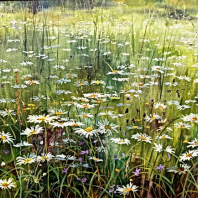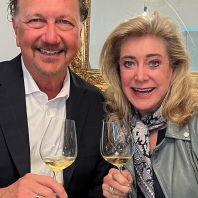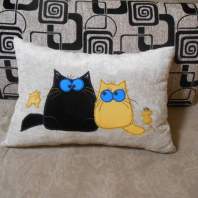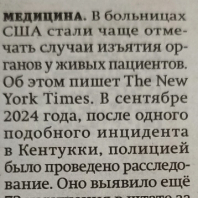Russian-British high-tech architecture
 sergei_arssenev — 14.08.2010
sergei_arssenev — 14.08.2010
Strolling around
London, tourists admire the avant-garde
skyscraper-“cucumber” 30 St Mary Axe ("The Gherkin", "Swiss
Re") and the overhead cover of the
BritishMuseum (BritishMuseum - "Queen Elizabeth II Great
Court"). But only few of them know that
this delight is aroused by the creative synergy of the two
outstanding architects: the Great Russian engineer and
architect Vladimir Grigorievich Shukhov
and the
master of the high-tech architecture Lord Norman Foster. The famous British
architect constantly uses the bearing lattice structures (lattice
shells) invented by Shukhov in his
masterpieces.
Lattice shell of the skyscraper 30 St Mary Axe - "The Gherkin" - "Swiss Re".
The world’s first bearing lattice shells of the overhead covers and towers were built by Vladimir Shukhov in 1896 for the biggest pre-revolution exhibition of Russia - XVI All-Russia industrial and art exhibition in Nizhniy Novgorod. The attention of foreign guests was most of all drawn by the open-work lattice steel hyperboloid water tower.

World’s
first hyperboloid lattice tower-shell
of Shukhov, 1896
This world’s first hyperboloid lattice structure-shell still exists near the palace of aristocrats Nechaev in Polibino, not far from the Kulikov field. The Great Maecenas and collector of masterpieces Yuriy Stepanovich Nechaev-Maltsov, who presented Russia with the Museum of Fine Arts (at present GMII after A.S. Pushkin in Moscow), was delighted with the graceful open-work structure of Vladimir Shukhov. He bought the tower at the Nizhniy Novgorod exhibition, and under the personal control of Vladimir Shukhov his first lattice shell was installed near the palace of Nechaev-Maltsov in his country estate Polibino (Dankovskiy area of the Lipetsk region).

World’s first hyperboloid lattice tower-shell
of Shukhov in Polibino.
The British magazine “The Engineer” wrote an enthusiastic article about this avant-garde lattice structure («The Nijni-Novgorod exhibition: Water tower, room under construction, springing of 91 feet span», «The Engineer», № 19.3.1897, P.292-294, London, 1897.). Shukhov’s lattice shells were also described by the German and French magazines. For the invented steel structures in the kind of bearing lattice shells V.G. Shukhov received patents (No. 1894, No. 1895, No. 1896 dated March 12, 1899):
No. 1894 - the invention of lattice covers for buildings made of the straight bearing elements multiply repeating and intersecting in the kind of quadrangles, which work on tension or pressing, with the hanging and prominent form of the cover;
No. 1895 – the invention of lattice arch-like covers for buildings made of metal strips put on the edge and bent in the form of a broken line, joined with each other in the bends in such a way that, as a result, it creates a cover consisting of the multiply repeating cells-honeycombs (resembling the bee honeycombs).
No. 1896 – the invention of lattice towers in the form of hyperboloid of rotation with rectilinear forming lines, which connect ring bases, with the reinforcement by intermediate rings. As a result, the rectilinear forming lines of the hyperboloid form the bearing lattice shell with cells made of straight elements, which work on pressing.
At the end of XIX century and during the first third of XX century
on the territory of Russian Empire and USSR according to V.G.
Shukhov’s projects were built more than 250 structures. During the
XX century lattice structures of bearing shells were used not
enough due to the complexity of their calculation without
computers. During the second half of XX century the high-tech
architects, the famous Buckminster Fuller, Frei Otto and Norman
Foster, implemented lattice shells into the modern practice of
construction, and in XXI century shells became one of the main
means of form-generating the avant-garde buildings.
Now lattice shells have become a creative mean of
the high-tech architecture, which pretend to domination in the XXI
century. The basis of high-tech is the use of the state-of-the-art
technologies. At the end of XX century – the beginning of XXI
century the perfection of technologies led to the appearance of
extremely earnest and very elegant architecture, the recognized
leader of which soon became Lord Norman Foster. “Shukhov is one of
my heroes!” – Norman Foster says in his interviews. The famous
architects Richard Rogers, Paul Andreu, Santiago Kalatrava, Renzo
Piano, Nicholas Grimshaw, Zaha Hadid, Massimiliano Fuksas and
others use lattice shells in their creative work. Now lattice
shells allow the creation of buildings with a very complex form,
including the famous Olympic stadium “Bird’s nest” in Beijing and
the amorphous complex “VELA” in Milan.

Lord Norman Foster: overhead
cover of the BritishMuseum court, 2000
(V.G. Shukhov’s
patents No. 1894
and No.
1895)
Compare Norman Foster’s lattice overhead covers of the British Museum with the overhead covers made by Vladimir Shukhov in 1896 in Nizhniy Novgorod (there are differences, of course, but the idea has not changed).

Lattice shell of Shukhov’s Oval
pavilion (1895) in Nizhniy Novgorod.


Composition of Lord Norman Foster, grand-prix at the
2008 architectural biennale in London
(V.G. Shukhov’s patent No.
1894)

Cupola of the
skyscraper Mary Axe in Londonу,
Norman Foster, 2004 (patents No.
1894,1895)


Norman
Foster, lattice shells of the Smithsonian American Art
Museum, 2007
(Shukhov’s patent
No. 1895)


Architect
Michael Hopkins, overhead cover of the Parliament administrative building
court, London, 2008
(Shukhov’s
patents No. 1894
and No. 1895)

Architect Ken Shuttleworth, project
VORTEX,
300-meter high hyperboloid skyscraper at the
outskirts of London, 2014 (Shukhov’s patent No.
1896)

Architect Ken
Shuttleworth, hyperboloid sculpture
Aspire
Tower
(Shukhov’s patent No.
1896)

Lord Norman Foster, Sage
Gateshead, 2004 (patents No. 1894,1895)

Lord Norman Foster, Khan
Shatyry Entertainment Centre, 2010 (patent No. 1894)

Hyperboloid bridge in Manchester -
Corporation
street bridge (Shukhov’s patent No.
1896)

British
company ARUP has built in
Guangzhou
the world’s highest 610-meter lattice hyperboloid TV
tower, 2010
(Shukhov’s patent No.
1896)
Lord Norman Foster has called to save
the last remaining lattice shell of Vladimir Shukhov
– the Shukhov Tower in Shabolovka,
Moscow (patent No.
1896):
http://www.guardian.co.uk/world/2010/apr/15/radio-tower-campaign-russia-foster
http://www.shukhov.org/news.html?n=63&id=1#news_63
Sergei Arssenev
Vice President of Shukhov Tower Foundation
Fragment of the report
"Lattice shells of V.G. Shukhov in the XXI
century”
at the meeting of the Russian
Academy of Sciences,
dedicated to the heritage of the academician Vladimir Shukhov
http://sergei-arssenev.livejournal.com/797.html
This
publication is available on the terms of license:
Creative Commons Attribution-Share Alike 3.0 Unported
Translation – Sergei Anisiphorov
|
|
</> |


 Радость лета.../ Художник Ольга Таланцева
Радость лета.../ Художник Ольга Таланцева  Я, Лукоморье и Живая вода.
Я, Лукоморье и Живая вода.  Молодожёны 67 и 68 лет гигнулись не от цирроза печени, как, возможно, хотели
Молодожёны 67 и 68 лет гигнулись не от цирроза печени, как, возможно, хотели  кото...
кото...  Неюбилейная Татьяна Пилецкая
Неюбилейная Татьяна Пилецкая  Животные, которые повлияли на историю
Животные, которые повлияли на историю  Проснулся, а голова в холодильнике...
Проснулся, а голова в холодильнике...  Дача
Дача 



